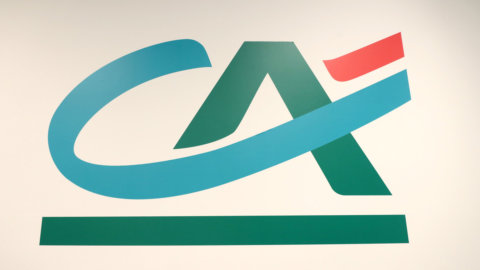Between assets and liabilities, they are parked in European banks illiquid securities for 6.800 billion euros. They are recorded in the balance sheet as "Level 2" (L2) or "Level 3" (L3) and were once known as "toxic securities". These are unlisted options, premiums or other derivative financial instruments. The figure is calculated by the Bank of Italy, which in a study released today warns against the destructive potential of these assets, crammed 44% in French institutions, 30% in German institutions and only 5% in Italian banks.
According to Via Nazionale, a 5% drop in the value of these securities would be enough to reduce the Cet1 of the 18 most exposed European banks from 14 to 11%. On average, the decrease would be 350 basis points, but in the worst cases it would reach 1.470. And these are not science fiction simulations: according to analysts at Palazzo Koch, “a violent price shock is not an unrealistic hypothesis”.
The problem is that illiquid stocks have no target market, as a result there is no certain price at which to enter them in the balance sheet. "Accounting standards leave the banks room for interpretations and for making discretionary choices on these securities - writes the Bank of Italy - The banks therefore have the incentive to use this faculty to distort the valuation process, with the objective that can vary to recognize immediate uncertain profits up to minimizing the adjustments on the fair value even in conditions of extreme illiquidity".
In short, the evaluation of these securities is left to the free interpretation of the banks, which, according to Via Nazionale, "have incentives to use this discretion to your advantage”. For this reason, "the profits that emerge from certain complex securities should more properly be classified as premiums for hidden risks", underlines Bankitalia.
But it's not just the value of these tools that creates perplexity: the study also points the finger against them the method by which they are entered in the financial statements. Usually each security is recorded individually at its own value, assets or liabilities. Banks that carry out risk management, however, can operate differently, calculating the difference between the various positions and reporting only the net value of a package of securities in the balance sheet.
“Although this approach has solid economic foundations – continues the Bank of Italy – it introduces complexity, discretion and opacity. If the securities in the portfolio are not perfectly hedged, which often happens, a risk is created”. In other words, according to Via Nazionale illiquid securities are managed in too opaque and arbitrary a way.
So far there European supervision focused on the problem of non-performing loans (Non performing loans, Npl), but Bankitalia aims to demonstrate that the danger posed by illiquid securities is just as serious.
“Both illiquid securities and NPLs are tailor-made products, opaque, illiquid and subject to high valuation uncertainty – concludes the study – Our simulations show that the valuation risk of Level 2 and 3 securities is similar to that of loans deteriorated". That is why “further supervisory effort in this area could lead to a deeper and more complete view on the valuation of these assets and their underlying risk”. Danièle Nouy, head of ECB Supervision, is likely to have his ears ringing.




